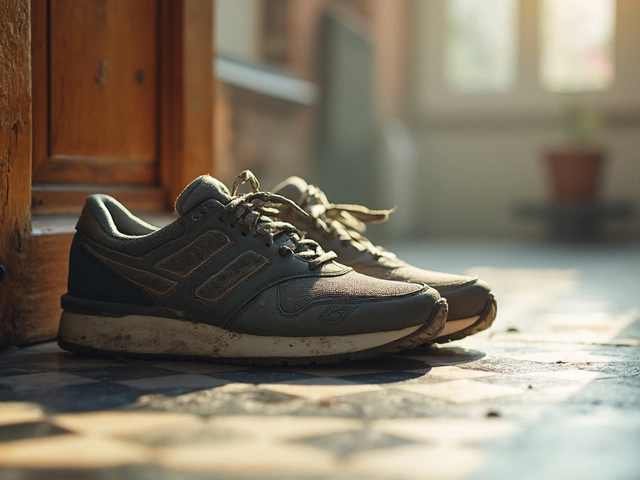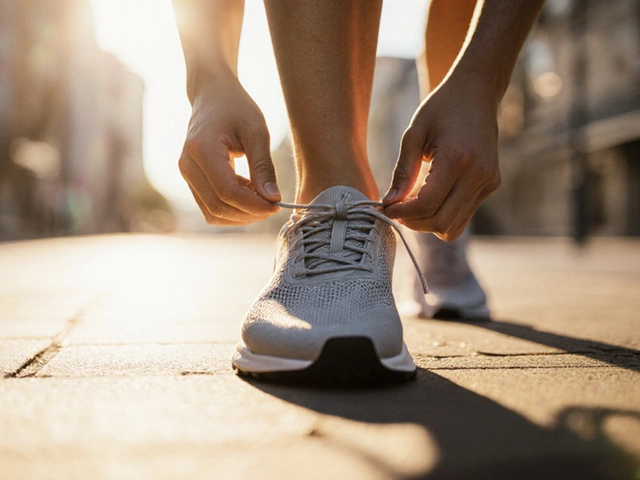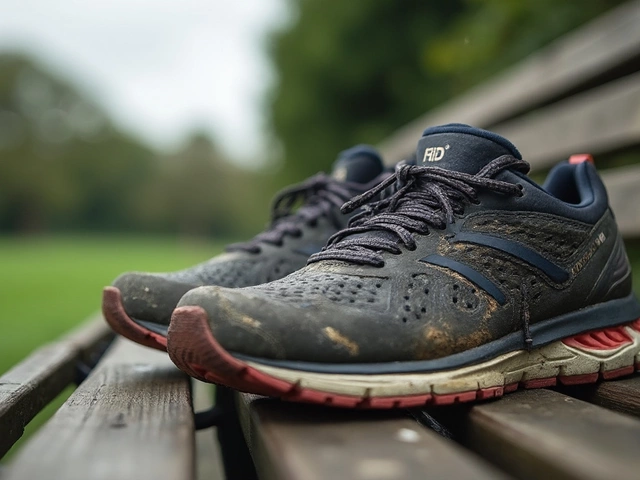How to Tell If Running Shoes Are Worn Out: Key Signs and Tricks
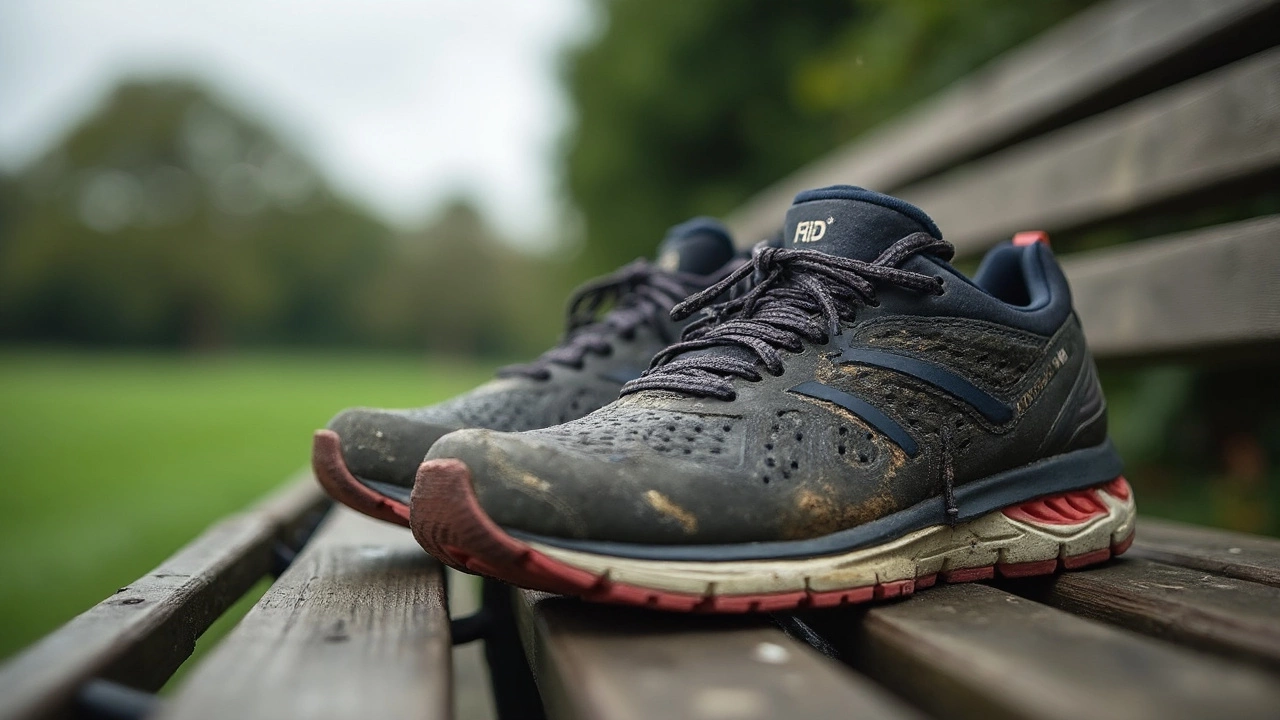
Ever wonder why your knees or feet start complaining after what should be an easy run? It might not be you—it might be your shoes. Worn-out running shoes can mess with your stride and add stress you didn’t sign up for. Figuring out when your favorite pair has called it quits isn’t always obvious, but ignoring the signs can lead you straight into injury territory.
So how do you actually know when it's time for a new pair? Forget what the box said when you bought them. Pay attention to what your shoes (and your body) are telling you every time you lace up. There are simple visual checks, but some clues are sneaky and easy to miss if you’re not looking. Let’s dig into clear, down-to-earth ways to spot a dying pair before they turn against you.
- Why It Matters If Running Shoes Wear Out
- Typical Lifespan of Running Shoes
- Easy Signs Your Shoes Need Replacing
- Less Obvious Clues You Shouldn’t Ignore
- How to Track Shoe Wear Like a Pro
- What to Do With Old Running Shoes
Why It Matters If Running Shoes Wear Out
Hanging on to old running shoes is risky business. When your shoes break down, you lose the cushioning and shock absorption your feet depend on. Without it, every stride pounds your ankles, knees, and hips harder. That’s one reason runners dealing with stubborn pains often trace them back to worn shoes, not training mistakes.
The most important thing about running shoes is their support system. The midsole—the part that gives the shoe its bounce—takes the biggest hit over time. When it compresses too much, you don’t just lose comfort, you lose protection. Studies show worn-out midsoles can make you more likely to twist an ankle or flare up an old injury.
Grip is another thing that slips away. The outsole (that rubber at the bottom) wears smooth, turning decent trail shoes into slip-and-slide machines on wet pavement. You might notice your feet roll inward or outward more than they used to because the treads are uneven. That messes with your form and sets you up for trouble.
If you’re serious about running, keeping track of your shoe’s condition isn’t about being fussy. It’s about avoiding those minor aches that can become months-long problems. Swapping your shoes when they need it keeps your body safer and your runs a whole lot more fun.
Typical Lifespan of Running Shoes
Most runners want their shoes to last forever, but reality checks in pretty quick. On average, running shoes hold up for about 300 to 500 miles. After that, the cushioning and support start dropping off, which can mildly ruin your next jog—or worse, lead to aches and pains.
Here’s what the pros say. According to the American Academy of Podiatric Sports Medicine:
“Most running shoes should be replaced after 350-500 miles of use, depending on the runner’s weight, running style, and surface.”
If you’re stacking up 20 miles weekly, your shoes might need replacing every four to six months. Clocking half that, you could stretch it out a bit longer. Of course, heavier runners and folks pounding concrete need to swap their shoes more often than lighter runners or trail folks.
| Mileage | Approximate Months (20 miles/week) | Surface |
|---|---|---|
| 300 miles | ~4 months | Road |
| 400 miles | ~5 months | Road/Trail Mix |
| 500 miles | ~6 months | Trail |
An extra pro tip: Don’t trust your eyes alone. Some shoes look decent on the outside long after the inner foam has stopped supporting your feet the way it should.
- Keep a running log (apps make this super easy now).
- If you rotate between pairs, track mileage for each one.
- Write the starting date or mileage on the tongue of your shoe with a marker. It seriously helps.
Bottom line—if you can’t remember when you bought your shoes, you’re probably overdue for a fresh pair.
Easy Signs Your Shoes Need Replacing
The first thing most runners do is check the outside of their shoes, but don’t stop there. Obvious signs you need a new pair might show up anywhere from your tread to the inside cushioning. Missing these red flags means you’re pressing your luck—and your joints.
- Tread is worn flat: If the bottom looks more like a bald tire than a sneaker, it's game over. The tread helps you grip the ground and avoid slipping, especially if you run outdoors.
- Cushioning feels dead: When you push down on the midsole—it’s the squishy part between the outsole and the upper—it shouldn't feel compressed like cardboard. If it does, you’re not getting the shock absorption you paid for.
- Heel counter is bent or loose: This is the stiff area supporting your heel. If it collapses easily or doesn’t hold its shape, that’s a clear sign of breakdown.
- Uneven wear: If you notice one side looks more beat-up, your shoe isn’t supporting your stride right anymore. That can lead to weird aches and pains, especially in your knees and hips.
- Holes or ripped uppers: If your shoes have started to tear or poke holes, they’re past their prime—no matter what the rest looks like.
As a well-known running coach, Amby Burfoot, says,
“If you can bend the shoe in half and twist it side to side with no resistance, it’s lost its ability to protect your feet and legs.”
If you like numbers, check out this table—these are typical shelf lives seen in different kinds of running shoes:
| Shoe Type | Usual Lifespan (Miles) |
|---|---|
| Neutral Cushion | 300-500 |
| Stability | 350-500 |
| Lightweight/Racing Flats | 150-300 |
| Trail Shoes | 350-500 |
But don’t just stare at your mileage log. Look at your running shoes after each run so you don’t get caught off guard by a sudden pain or a surprise blowout. It’s always better to swap out your sneakers a week too soon than a run too late.
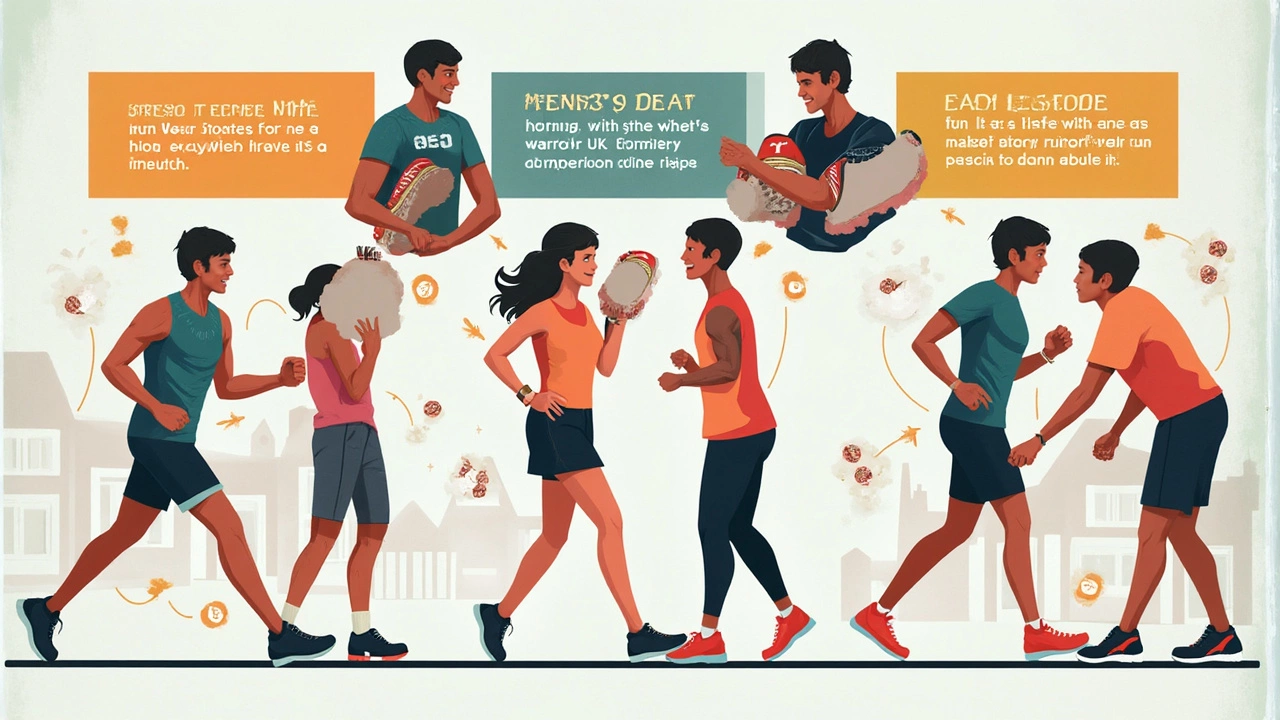
Less Obvious Clues You Shouldn’t Ignore
Even when your running shoes look alright, problems can sneak up if you’re not paying attention. Sometimes the signs are more about how you feel than how the shoes look. One of the first things people notice is new aches that don’t make sense. If your feet, shins, or knees feel sore after runs for no good reason, your shoes might be to blame. It’s not always about visible wear—a lot happens on the inside of the shoe that your eyes miss.
Another sneaky sign: loss of bounce or cushion. When you press your thumb into the midsole and it feels flat or hard, the shock absorption is shot. Suddenly, you’re getting less protection with every stride, which ramps up stress on your joints. Don’t ignore weird noises—sometimes, old midsoles get squeaky or thuddy compared to that original, springy feel.
Keep an eye (and nose) out for other changes:
- Your feet start sliding around, even when the laces are tight. The uppers have probably stretched out too much.
- The heel feels loose or sloppy, no matter how hard you try to snug it up.
- Blisters or hot spots pop up in places they're never been before—old shoes can rub in new spots once the lining or padding breaks down.
One often missed clue: Compare your old pair with a fresh new pair side by side. The difference in height and shape, especially in the heel or arch, can be pretty obvious. Here’s a quick breakdown of what you might notice if you track your comfort or pain level over time:
| Sign | What It Means |
|---|---|
| Increased soreness after runs | Shoe cushioning is probably worn out |
| New blisters or calluses | Lining or fit has changed |
| Less traction on wet or smooth surfaces | Outsole rubber is getting slick |
| Odd lean when shoes are on flat ground | Midsole or outsole is compressed unevenly |
One last tip: If you’re swapping between different running shoes and notice you always feel sore only after using one pair, trust that feeling. Your body keeps better tabs on shoe life than your eyes sometimes do.
How to Track Shoe Wear Like a Pro
Most runners just guess when it’s time to swap out a pair, but getting it wrong can cost you comfort, money, and sometimes even a trip to the doctor. The good news? You don’t need any special gadgets or a fancy logbook to keep tabs on your running shoes.
First, keep an eye on your mileage. Most brands say running shoes last between 300 and 500 miles (about 480-800 kilometers), depending on your running style, the terrain, and your body weight. If you use an app like Strava, Nike Run Club, or Garmin Connect, you can track your shoe mileage automatically by logging which pair you wore for each run. Old-school? Just jot the date on the inside tongue with a Sharpie, and do a quick calculation once a month based on your weekly runs.
Don’t rely only on miles, though. Sometimes shoes wear out faster if you’re heavy-footed or do a lot of trail running. Or maybe they last longer if you’re light and stick to smooth pavement. The trick is to blend mileage with regular check-ups.
- Set a reminder: Every month, give your shoes a once-over. Look for worn-down tread, compressed cushioning, and any odd bulges or tears.
- Pay attention to your body: New aches in your feet, knees, or hips that show up after a run can mean your shoes need retiring.
- Rotate pairs: If you use more than one set, track each pair’s use separately. This helps you compare and notice when one set is declining faster.
Bonus tip: snap a picture of your shoe’s sole when they’re new. Six months down the line, compare that photo to what you see now—sometimes the changes are easier to spot side-by-side.
Simple checks beat guessing every time. A little tracking now means a lot less soreness (and expense) later.
What to Do With Old Running Shoes
Just because your running shoes are done for running doesn’t mean they’re useless. Tossing them straight in the trash isn’t your only option—and it’s not the best one for the planet or your wallet.
First, see if local stores run shoe recycling programs. Big brands like Nike have drop-off bins just for this purpose, and Nike Grind turns those shoes into things like playground flooring and athletic courts. You can even check with specialty running shops in your area; some team up with groups that distribute lightly used shoes to folks who need them.
Donation is another smart play, if your shoes still have some structure and the tread isn’t totally gone. Organizations like Soles4Souls and One World Running take used sneakers, fix them up if needed, and deliver them where they’re needed most. It’s easy to ship them out—just check their websites for instructions.
If the shoes are too trashed for running but not falling apart, give them a new job as yardwork or backup shoes. Old running shoes work great for mowing the lawn, painting, or errands where you don’t care about dirt.
Need a creative outlet? Cut up really old shoes to use as garden markers, door stoppers, or to cushion heavy stuff in the garage. Some folks even use clean pieces as chew toys for their pets (just make sure there aren’t any loose bits).
Bottom line: your old pair doesn’t have to be landfill fodder. With a little effort, you can recycle, donate, or repurpose them—and keep the good vibes going long after their last mile.

